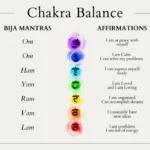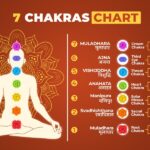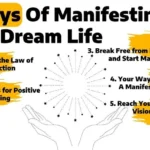This article explains how to meditate for anxiety and stress relief, step-by-step, using easy language, scientific insights, and tips for Indian lifestyles.
Anxiety and stress are now a part of daily life for many people in India. Whether it’s due to work pressure, family responsibilities, or health concerns, most of us feel overwhelmed at times. But there’s a simple, time-tested solution that can bring peace — meditation. And the good news is, you don’t need to be a spiritual expert to get started.
Why Meditation Helps with Anxiety and Stress

When we feel anxious, our mind runs in circles. We overthink, worry about the future, and feel restless. Meditation helps us slow down. It teaches us to stay in the present. Science now supports what ancient Indian wisdom has said for centuries — meditation calms the nervous system, reduces stress hormones, and improves emotional balance.
With daily practice, meditation can reduce anxiety, improve sleep, and help you feel more in control of your thoughts and emotions.
Also Read The Science Behind Mindfulness
Simple Meditation Techniques That Work
Here are three easy techniques that are especially helpful for anxiety and stress:
1. Mindfulness Meditation
Sit quietly and focus on your breath. Feel the air going in and out. When your mind wanders, gently bring your focus back to your breath. This helps you stop overthinking and feel more relaxed.
2. Loving-Kindness Meditation (Metta)
Close your eyes and repeat phrases like:
“May I be peaceful. May I be safe. May I be happy.”
Then think of your loved ones and send them the same wishes. This practice builds self-love and reduces negative emotions.
3. Yogic Breathing (Pranayama)
Try slow, deep breathing or alternate-nostril breathing (Nadi Shodhana). These techniques calm your nerves and slow your heart rate. You’ll feel peaceful within minutes.
Best Time and Place to Meditate
- Choose a quiet spot in your home where you won’t be disturbed.
- Sit on a cushion, mat, or chair with your spine straight.
- Early mornings or evenings are ideal times to meditate.
- Start with 5 to 10 minutes a day and increase gradually.
Consistency is more important than how long you meditate. Even a few minutes daily can bring powerful results.
How to Start a Basic Meditation Routine
Here’s a simple routine to help you begin:
- Sit comfortably in a quiet space.
- Close your eyes and relax your body.
- Breathe slowly and deeply. Focus only on your breath.
- If thoughts come, don’t fight them. Just return your attention to your breathing.
- Set a timer for 5–10 minutes, using a soft alarm.
- End by gently opening your eyes and feeling thankful for the moment of calm.
Repeat this daily for best results.
What Science Says About Meditation for Anxiety
- Meditation lowers cortisol, the stress hormone.
- It improves brain areas linked to focus, emotions, and calmness.
- After just a few weeks, people report better sleep, reduced worry, and improved mood.
- Meditation also helps manage physical symptoms like headaches, chest tightness, and rapid heartbeat — which are common in anxiety.
Doctors in India now recommend meditation as part of natural healing, alongside therapy and medication when needed.
Tips for Indian Readers
- Use Indian music or chants to make meditation more soothing.
- Join a local yoga class that includes meditation. Many yoga centres in India offer affordable classes.
- Meditate after a morning bath or before bedtime. This creates a peaceful routine.
- Try family meditation. Sit with your partner or children and meditate together.
- Combine with Ayurvedic practices like sipping warm herbal tea afterward for deeper relaxation.
How Long Before You See Benefits?
Many people feel a little calmer after just one session. But major changes — like reduced anxiety and better sleep — usually appear within 2 to 4 weeks of regular practice.
The key is not to expect overnight results. Be gentle with yourself. Trust the process.
FAQs on Meditation for Anxiety and Stress
Q: Can meditation cure anxiety completely?
A: Meditation helps manage anxiety, but it’s not a cure. For severe cases, use it along with therapy or medical treatment.
Q: What if I can’t sit still or focus?
A: That’s normal, especially in the beginning. Start with short sessions. Try focusing on your breath or using guided audio meditations.
Q: Is it okay to meditate lying down?
A: Yes, if you are too tired or have back pain. But sitting up is better for staying alert.
Q: Can children or teens use meditation for school stress?
A: Yes. Many schools in India now teach mindfulness to help students focus and feel less anxious.
Q: Should I meditate before or after yoga?
A: Both are fine. You can meditate after yoga to absorb the calm, or before yoga to settle your mind.
Final Thoughts
Meditation is a simple, ancient tool that brings deep peace in a modern, stressful world. You don’t need a fancy space or expensive course. You just need a few quiet minutes, a calm breath, and the willingness to begin.
Whether you’re a college student, office worker, homemaker, or retired elder, meditation can help ease your stress and bring mental clarity.
Start today. Breathe. Relax. Heal.
Let meditation guide you toward inner peace — one breath at a time.










